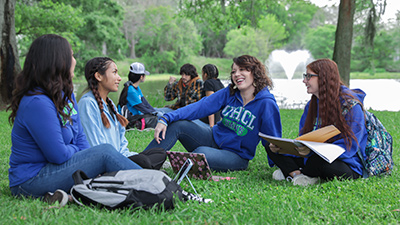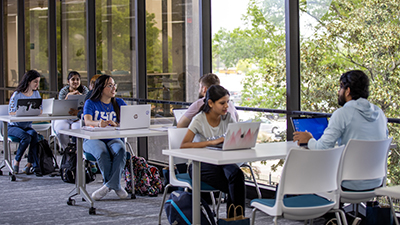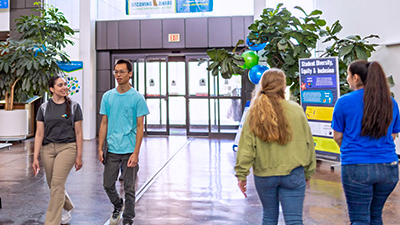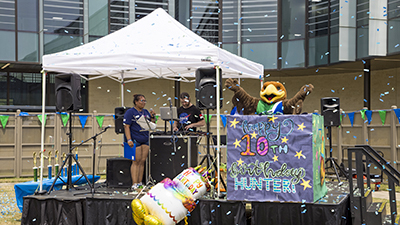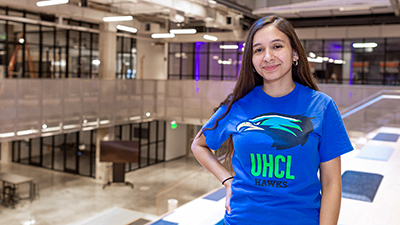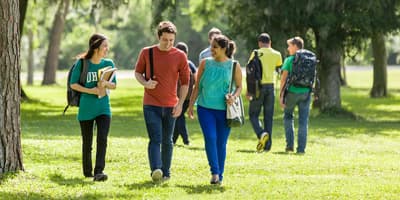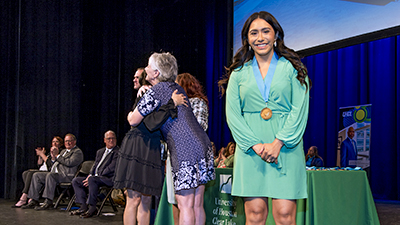
NASA Connections
Apollo 11: perspectives from former NASA workers
In celebration of the 50th anniversary of the Apollo 11 moon landing in 2019, we asked members of our UHCL family who have close ties to Johnson Space Center for their perspectives on the event, and on the university's strong ties with NASA.
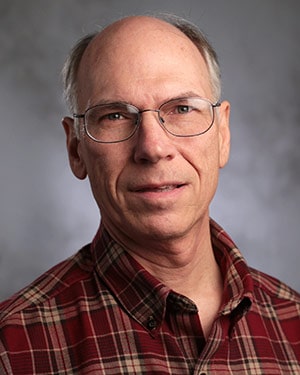
James B. Dabney, program chair and professor of engineering, joined NASA contractor System Development Corporation in 1986 to work on ascent flight design software for the Space Shuttle program. In 1989 he transitioned to Intermetrics to work on the Shuttle Avionics Systems Engineering Task. There, Dabney performed independent verification and validation of Space Shuttle avionics software and Mission Control Center planning software. Since joining UHCL in 2000, he continues provide systems engineering research for NASA and its contractors.
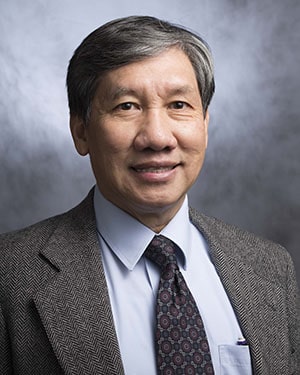 Luong Nguyen, associate professor of engineering, worked at JSC from 1977 – 2015 as an employee
of various aerospace firms, including Lockheed Martin, ERC and L3-Communications.
He worked as a real-time simulation development engineer on the Space Shuttle and
Space Station programs. His last 15 years there were concentrated in the robotic manipulator
systems of the Space Shuttle and Space Station. He now teaches robotics, and was the
faculty advisor for UHCL students who competed in NASA's four-year Swarmathon - a
challenge among universities to program autonomous robot rovers to work collaboratively
on tasks.
Luong Nguyen, associate professor of engineering, worked at JSC from 1977 – 2015 as an employee
of various aerospace firms, including Lockheed Martin, ERC and L3-Communications.
He worked as a real-time simulation development engineer on the Space Shuttle and
Space Station programs. His last 15 years there were concentrated in the robotic manipulator
systems of the Space Shuttle and Space Station. He now teaches robotics, and was the
faculty advisor for UHCL students who competed in NASA's four-year Swarmathon - a
challenge among universities to program autonomous robot rovers to work collaboratively
on tasks.
If you are old enough to remember Apollo 11, please share your memories.
James B. Dabney: I grew up with the space program. One of the parents brought a portable television to my third grade classroom so we could watch Allen Sheppard's launch in May of 1961. I was excited to watch the landing in 1969, but to me, that was not as exciting, not as big a step, as Apollo 8 (the first manned flight to leave Earth orbit and circle the moon). Growing up in the 1960s, the steady progression of the space program was a part of American life. Apollo 11 was the final chapter, with the remaining Apollo missions as epilogue. So to me, seeing it happen was similar to the ending of an enjoyable novel or completion of a challenging project.
Luong Nguyen: I was 8 years old and remembered watching Neil Armstrong landing on the moon on television in Vietnam. Actually, I was peeking through the window of my richer neighbor's window to look at his television set. My family did not have a TV. I was astounded that it could be done and proceeded to learn how to build a cheap homemade telescope right after that.
Thomas L. Harman, founder of the Center for Robotics Software: I am old enough and was in Houston when Neil Armstrong set foot on the moon. I was 26 and participated in several of the splash down parties in Nassau Bay. I later met Armstrong in 1971 on a cruise to see a total eclipse of the sun. He and Isaac Asimov were speakers on that cruise. He described the Corner Reflector left on the moon used to bounce a laser to measure the precise distance from the Earth to the moon and determine if it varies. In short, the space program was spectacular and out of this world!
Do you think the moon landing changed our lives as a society? If so, how?
James B. Dabney: I do believe it changed our lives as a society, not just in the USA, but globally. President Kennedy said that "we choose to do these things because they are difficult." Our success continues to encourage people around the world to accept challenges because we know "if we can put a man on the moon, we can certainly do this."
Luong Nguyen: I think landing on the moon inspired a whole new generation of STEM students.
Thomas L. Harman, founder of the Center for Robotics Software: Clearly, the space program invigorated science and engineering in this country — or maybe it was Sputnik. In any case, it was a spectacular engineering achievement.
Did the moon landing have any effect on your career choice? If so, how?
James B. Dabney: Apollo 11 didn't affect my choice of career. I always wanted to fly airplanes and be an engineer.
Luong Nguyen: It influenced me to go to the U.S. and study engineering.
What compelled or impelled you to work for or with the space program?
James B. Dabney: I never felt compelled to work in the space program. I worked for several years doing mechanical design in the petrochemical industry and enjoyed that as well. My initial transition to aerospace was due to a great job opportunity on the Shuttle program. I've stayed involved due to the interesting challenges and the great people.
Luong Nguyen: The U.S. space program really inspired me and I enjoyed very much my time working there.
Thomas L. Harman, founder of the Center for Robotics Software: Apart from my Ph.D. program and stint at Lockheed, the space program was always important to me. As a young science fiction fan, I loved Isaac Asimov’s stories about space. In Washington D.C. as a college student, I worked at the National Bureau of Standards (now NIST) for Dr. Murray Bullis. He had contacts at Rice and he encouraged me to apply for the graduate program there.
How does your NASA-related experience inform or influence your work at UHCL?
James B. Dabney: The majority of our Systems Engineering graduate students are practicing systems engineers employed by NASA and its contractors. My experience working as an engineer and as a researcher supporting NASA systems engineers keeps me current so that I can keep my coursework relevant to NASA's needs.
Luong Nguyen: My experience with the space robotic systems helped prepare me for teaching robotics at UHCL.
Thomas L. Harman, founder of the Center for Robotics Software: The experience in design was invaluable as an engineer. More importantly, working with such talented and dedicated people was particularly inspiring to a young engineer – I was young then!
Adjacent to NASA Johnson Space Center, UHCL was created to meet a vital demand for trained engineers, physicists and mathematicians to join the U.S. space program.
